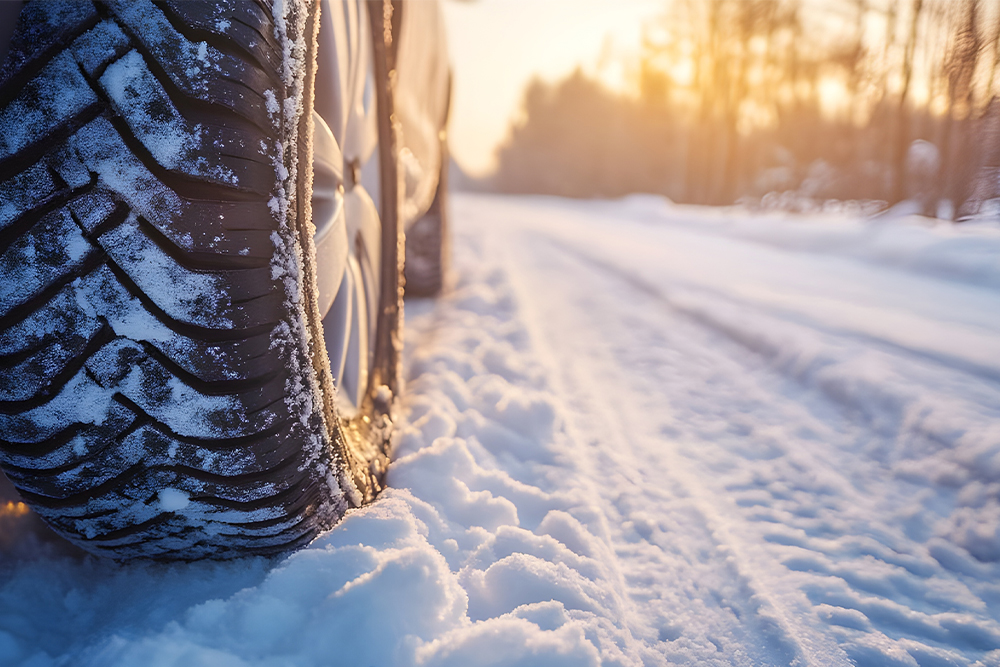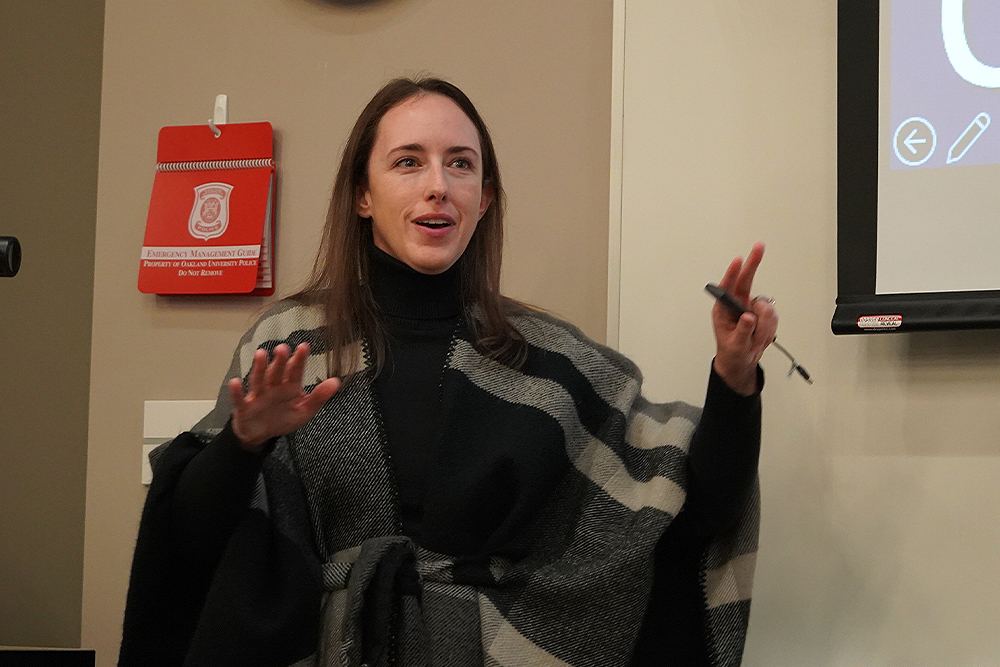
Learning to drive in nasty winter weather is a rite of passage for Michiganders, but there can be a steep learning curve for a significant number of students at OUWB.
That’s because icy roads, snow, slush and other unpredictable weather variables are new — and unavoidable —obstacles for many not from the region.
The annual “OUWB Winter Driving Session,” however, aims to help.
Presented by AAA, the session is designed to help educate students with navigating winter weather conditions with confidence. The most recent version was held on Monday.
“This event is something that we've done annually for a long time,” said Katy Torma, senior medical school advisor. “It is a great way for students who are from out of state, which is sometimes almost 50% of our class, to learn about an environment that they've never been in before for driving.”
“But even for us Michigan drivers, I always learn something new,” she added. “There’s always great tips and tricks, and it's good to be refreshed on what to look for when you're doing your winter driving.”
OUWB medical students like Rosemary Chellakudam, M1, were among those who attended the event. Mary is originally from California. She explained how Michigan offers a sharp contrast with the weather in her home state.
“I'm not from Michigan, and I'm really unfamiliar with driving in snow, and it was really reassuring to be able to hear what some good, proper techniques are to stay safe,” she said. “I did have like a little incident where I lost a little bit of traction, but now I know what to do.”
‘Slow down, increase space’
Rachel Wilson, director of driver education programs, AAA – The Auto Club Group of Michigan, led the session in O’Dowd Hall. | |
Rachel Wilson, director of driver education programs, AAA – The Auto Club Group of Michigan, led the session in O’Dowd Hall. |
Rachel Wilson, director of driver education programs, AAA – The Auto Club Group of Michigan, led the session in O’Dowd Hall.
Wilson covered key safety tips for driving in snow and ice, emphasizing the importance of reduced speed, increased following distance, and maintaining vehicle control.
Wilson shared how the key to dealing with these challenges is reducing speed. The slower you go, the better traction your car has.
“The one thing, if you remember anything from today — is you have to go slow,” Wilson said.
“Anytime you're turning the wheel, those are times when you're more likely to experience direction loss. So when you're approaching turns and curves, go slow. You need to go significantly slower than you would on dry pavement,” she explained.
Wilson also urged drivers to increase space between vehicles. On a day of dry pavement and good visibility, a three-second following distance is standard. However, in winter conditions, this distance should be significantly greater.
“In a winter conditions situation, is three seconds appropriate?” she asked. “Absolutely not.”
“You want more space, because when you have a distraction, it's going to take you significantly longer to stop. If the roads are icy, it can take 12 times as long to stop your car as it would on the normal pavement. We need more space to allow that extra stopping time,”
The session also addressed the challenges of driving on hard-packed snow and ice and the importance of “rocking” the car to regain traction if stuck. Wilson advised against driving in snow unless necessary and suggested waiting for roads to be cleared.
Additional tips that Wilson offered included:
- Do everything more gradually – build up momentum slowly.
- Complete regular maintenance on your vehicle – either yourself or through an auto technician.
- Warm your vehicle in an open space to avoid carbon monoxide buildup.
- Dust off the snow and debris from your car, including windows and mirrors, before driving.
- Practice safe driving practices by always wearing a seatbelt and staying focused on the road.
- Don’t rely solely on vehicle technology – rear cameras and sensors can easily be covered by debris.
- Be prepared – keep an emergency kit in your car with essentials like blankets and a flashlight.
To request an interview, visit the OUWB Communications & Marketing webpage.
This work is licensed under a Creative Commons Attribution-NonCommercial 4.0 International License.


